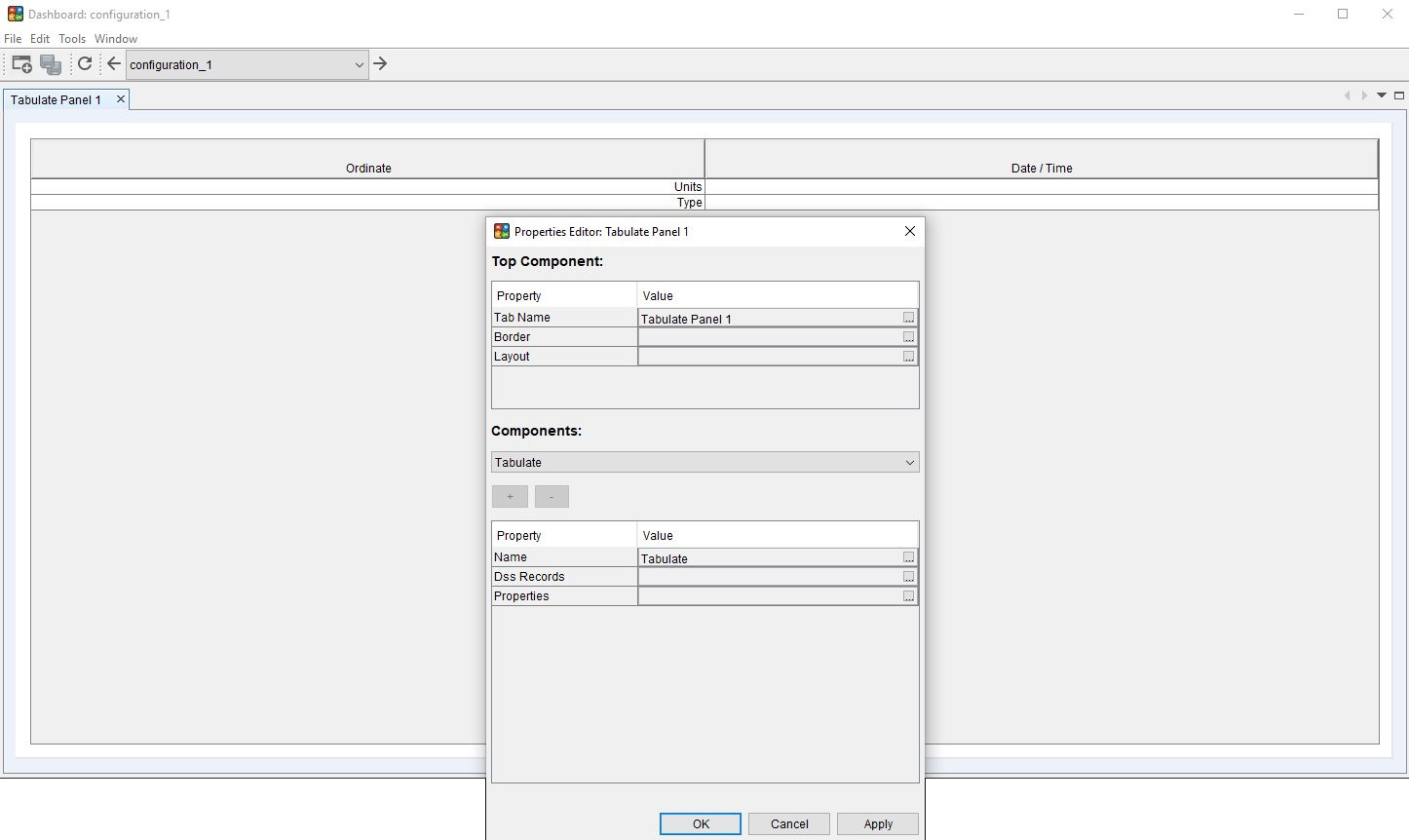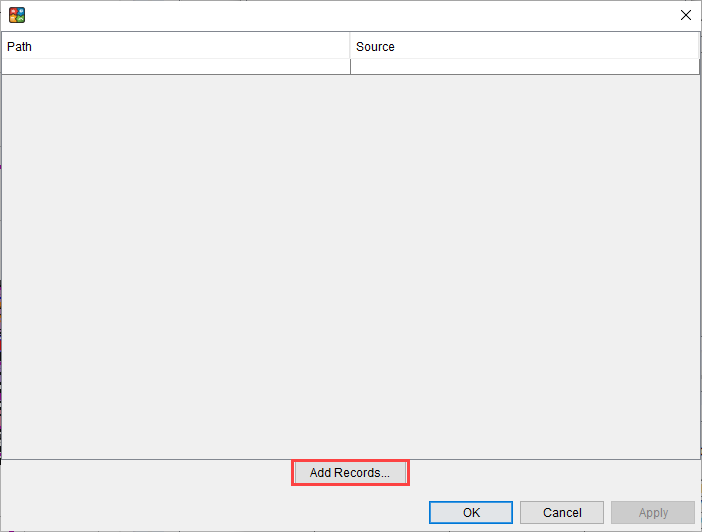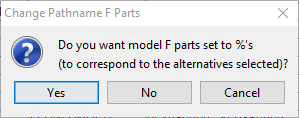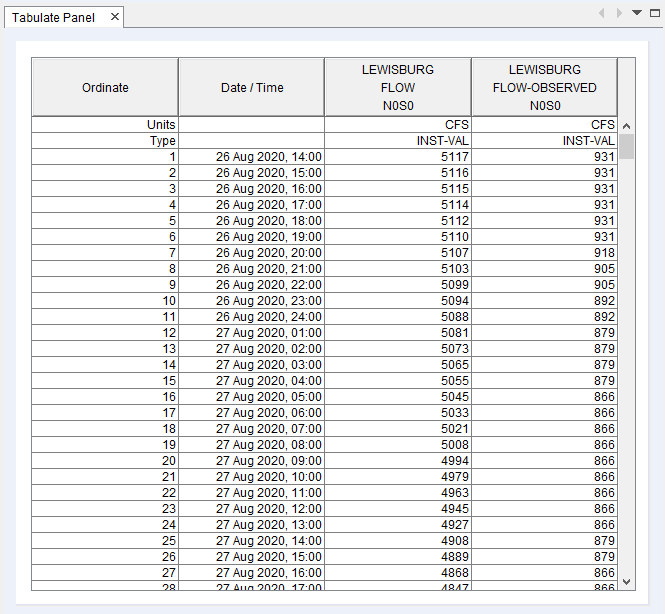The tabulate panel allows for the display of tabulated data. To add a "Tabulate Panel", you go to the "file" option in the top left, then selects "add widget" and will select the "Tabulate Panel" option. This will create a fairly empty window (seen in the background of Figure 1). To add information to the panel, you need to right-click on the tab and click the properties option. Once that is selected, a "Properties Editor" window should open as seen in Figure 1. You can then select the the ellipses on the right of any attribute that is desired to be edited.

To add DSS data to the panel, you will select the ellipses under the "Value" header next to "Dss Records". This will open another window (Figure 2).

Then you will select "Add Records...". This will cause DssVue window to open. You will need to populate the "File Name:" with the desired dss file or go to the "File tab" and open the desired dss file. "Select" the dss files of interest and once all are selected, click "Add Pathnames". Then another popup window will show asking if the files are wanted to be stored using relative "F Part" options (Figure 3).

Selecting "Yes" will change the F part of the dss filename to percent signs for each model key that would be used (example, if for HEC-HMS results, the F part would be %% assuming there is only a MFP or a MetVue alternative before the HMS model). This use of wildcards allows for the data shown to switch between forecast alternatives as the user progresses and not having to have different configurations for differing alternatives. If you select "No" when prompted about setting the F parts to "%", this will lock in the model key so the data will only be shown for the selected model alternative. This means that if the user decides to display alternative A0B0 in the table and chooses not to convert the F-part to %, then the table will only show results for A0B0 even if the user switches to running A0C0 (the use of % would allow the table to be updated with the A0C0 results).
